As devoted cat enthusiasts, we’re always captivated by felines that possess the striking appearances of tigers, leopards, lions, and bobcats. If you dream of having a miniature zoo right in your living space—one where you can cuddle the animals without any safety concerns—then exploring exotic house cat breeds might be perfect for you! These breeds offer a touch of the wild within the comfort of your home.
Before we delve into our curated list of adoptable exotic-looking cat breeds, it’s important to understand what sets them apart. These aren’t your average domestic shorthairs; owning an exotic house cat can be a unique and rewarding experience, but it also comes with considerations that differ from typical cat ownership.
Essential Considerations Before Welcoming an Exotic-Looking Cat
Thinking about bringing an exotic house cat into your life? It’s crucial to be prepared for the specific needs and potential challenges that come with these distinctive breeds. Here are some key aspects to consider:
Legal and Ethical Factors
Before you get carried away imagining a mini-leopard lounging on your sofa, it’s essential to understand the legal landscape surrounding exotic cat breeds.
Regulations vary significantly depending on where you live. Breeds like the Savannah cat, with their recent wild ancestry, often face specific legal restrictions. In the United States, for instance, many states mandate that Savannah cats must be several generations removed from their serval ancestors to be legally kept as pets. It’s critical to research your local and state laws regarding ownership of specific exotic cat breeds.
Beyond legalities, ethical considerations are also paramount. Ensure that breeders (if you are not adopting) prioritize the health and well-being of the cats and are breeding responsibly, focusing on domestic traits suitable for a home environment rather than emphasizing wild characteristics. Adopting from rescues that specialize in exotic breeds is often the most ethical choice, giving a home to a cat already in need.
Activity Levels and Enrichment Needs
Exotic house cats are not just about stunning looks; they are typically bursting with energy and intelligence. Their wild heritage often translates to a higher need for physical and mental stimulation compared to more traditional domestic breeds.
These cats are natural explorers and hunters at heart. Expect to provide ample opportunities for play, exploration, and mental challenges. Interactive toys, puzzle feeders, climbing structures, and even leash training can be essential for keeping these active minds and bodies engaged. Breeds like Bengals and Chausies are particularly known for their high energy levels and need for interactive play.
Without sufficient outlets for their energy, exotic house cats can become bored and potentially destructive. A bored exotic cat might express their frustration through scratching furniture, excessive vocalization, or other unwanted behaviors. Providing a stimulating environment is key to a happy and well-adjusted exotic house cat.
Litter Box Habits and Hygiene
When it comes to bathroom habits, exotic cat breeds can sometimes have particular preferences and needs. Due to their often larger size, providing a large litter box is generally recommended to ensure comfort and prevent accidents.
Cleanliness is usually a high priority for these fastidious felines. Frequent litter box cleaning is not just about hygiene; it’s about catering to their natural instincts for a clean environment. Some exotic breeds may also be more particular about the type of litter they prefer, whether it’s unscented, clumping, or a specific texture.
Their larger size and active nature might also mean more frequent litter box use and a quicker buildup of waste. Be prepared for potentially more diligent litter box maintenance to keep your exotic house cat happy and your home smelling fresh.
Exotic House Cats That Resemble Wild Felines
Now, let’s explore some fascinating exotic house cat breeds that bring the beauty of the wild into your home. We’ve categorized them based on the big cat they most closely resemble:
Cats That Look Like Tigers
Toyger
 Toyger exotic house cat breed
Toyger exotic house cat breed
The Toyger may have a playful name, but their striking orange and black stripes are undeniably tiger-like. Despite their wild appearance, Toygers are purely domestic, with no wild cat ancestry. They were developed in the 1980s by crossing Bengals with striped Domestic Shorthair cats, aiming to create a miniature tiger in feline form.
Reaching up to 15 pounds, the Toyger is a medium-sized cat with a muscular build and a friendly, affectionate personality. They are known for their high energy levels and intelligence, making them trainable and eager to learn tricks. Toygers are wonderful companions for families and individuals seeking a playful and visually stunning house cat. Their adaptability and loving nature make them excellent exotic house cats.
Cats That Look Like Leopards
Bengal
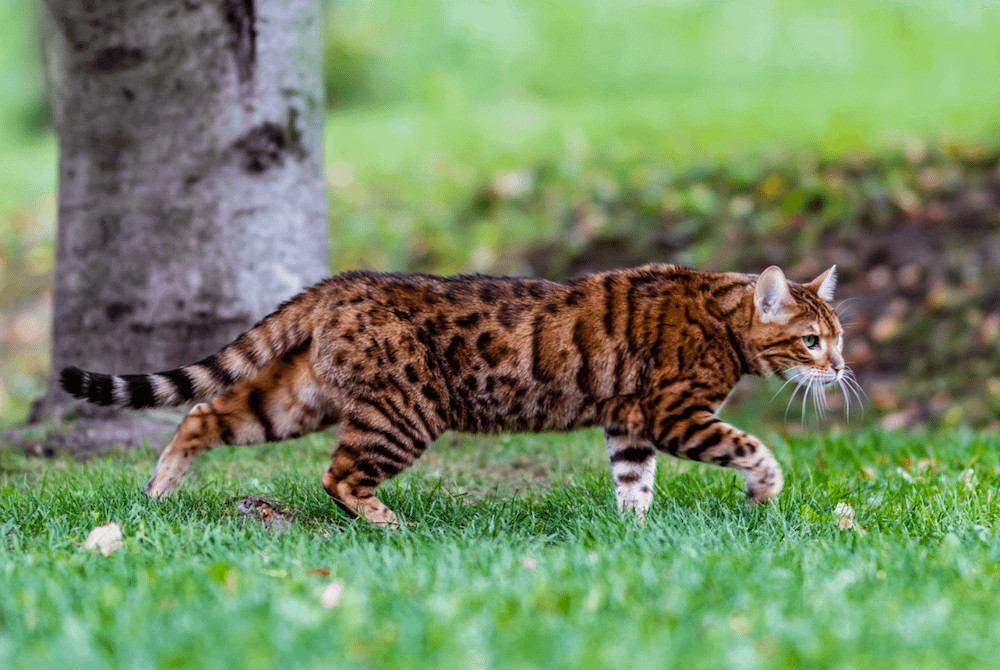 Bengal exotic house cat breed
Bengal exotic house cat breed
The Bengal cat stands out with its direct link to the wild, being a hybrid breed resulting from crossing Asian Leopard Cats with domestic shorthairs. This wild ancestry contributes to their captivating spotted or marbled coats, reminiscent of a leopard. Bengals are not just visually impressive; they are also highly intelligent and active cats.
Bengals are known for their playful nature, often enjoying water and exhibiting dog-like traits such as fetching and leash walking. They are muscular and can weigh up to 18 pounds, requiring plenty of space and opportunities for exercise. Bengals thrive on interaction and attention from their humans, making them ideal companions for active individuals or families who can dedicate time to play and engagement. Their intelligence and striking appearance firmly place them among the most sought-after exotic house cats.
Ocicat
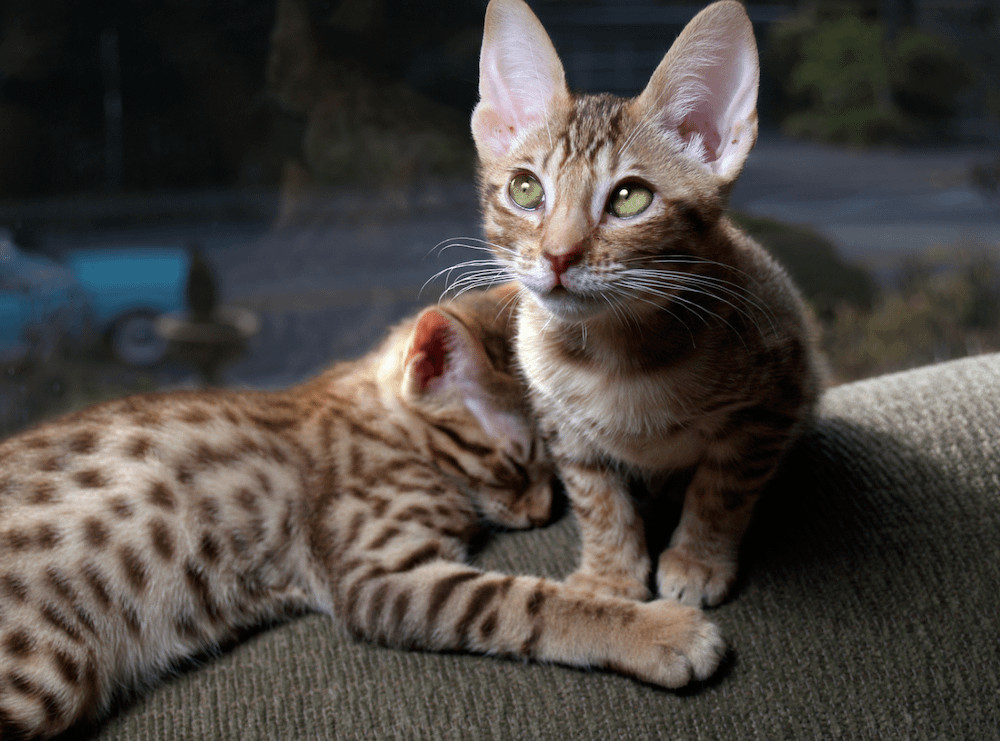 Ocicat exotic house cat breed
Ocicat exotic house cat breed
The Ocicat is a testament to serendipity in breeding. Originally an accidental creation in the 1960s during efforts to breed Siamese cats with Abyssinian-colored points, the Ocicat’s striking spotted coat quickly gained admirers. Breeders further developed the breed by introducing American Shorthair lines to expand their color range.
Ocicats are medium-sized, reaching up to 15 pounds, and boast a variety of spotted coat colors. The tawny spotted Ocicat particularly resembles a leopard. Despite their wild appearance, Ocicats are known for their friendly, outgoing, and devoted personalities. They are highly social cats who thrive on being involved in their families’ daily lives, making them wonderful, people-oriented exotic house cats.
Cheetoh
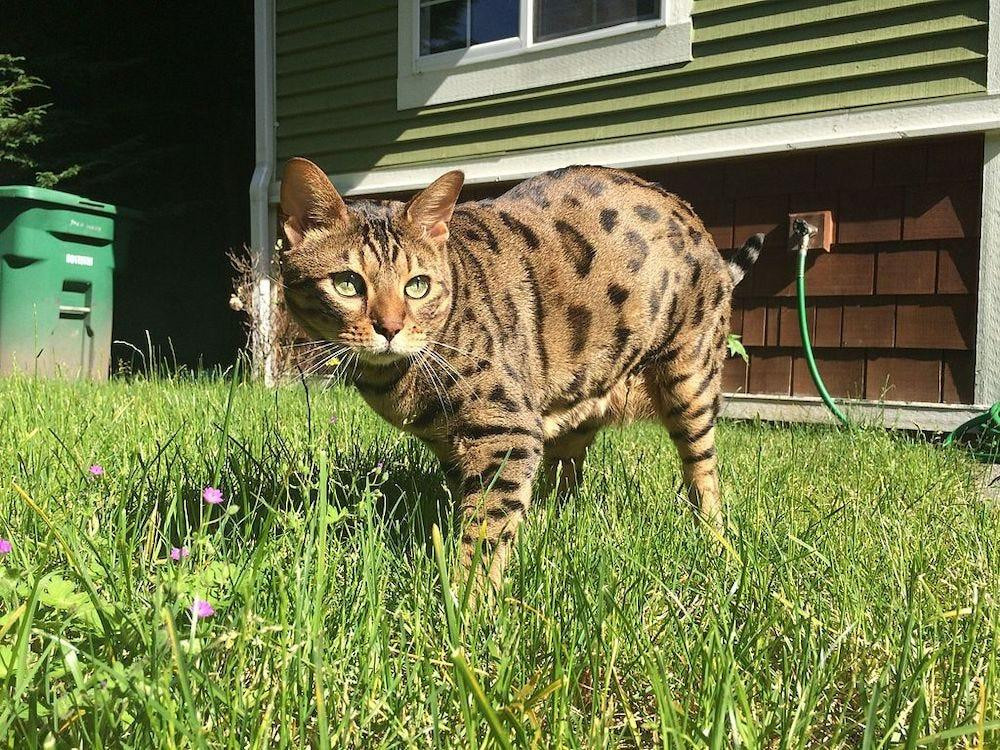 Cheetoh exotic house cat breed
Cheetoh exotic house cat breed
The Cheetoh cat truly lives up to its name with its cheetah-like spotted coat and graceful, stalking gait. A relatively new breed, the Cheetoh is a cross between the Ocicat and the Bengal, combining the best of both breeds’ exotic looks and domestic temperaments. Cheetohs are muscular and large, sometimes weighing over 20 pounds, making them one of the larger exotic house cat breeds.
Despite their imposing size and wild appearance, Cheetohs are known for their affectionate, playful, and even docile nature. They are highly trainable and enjoy activities like leash walking. While still rare and not recognized by all cat associations, the Cheetoh is gaining popularity for its unique appearance and loving personality, fitting well into the exotic house cat category.
Egyptian Mau
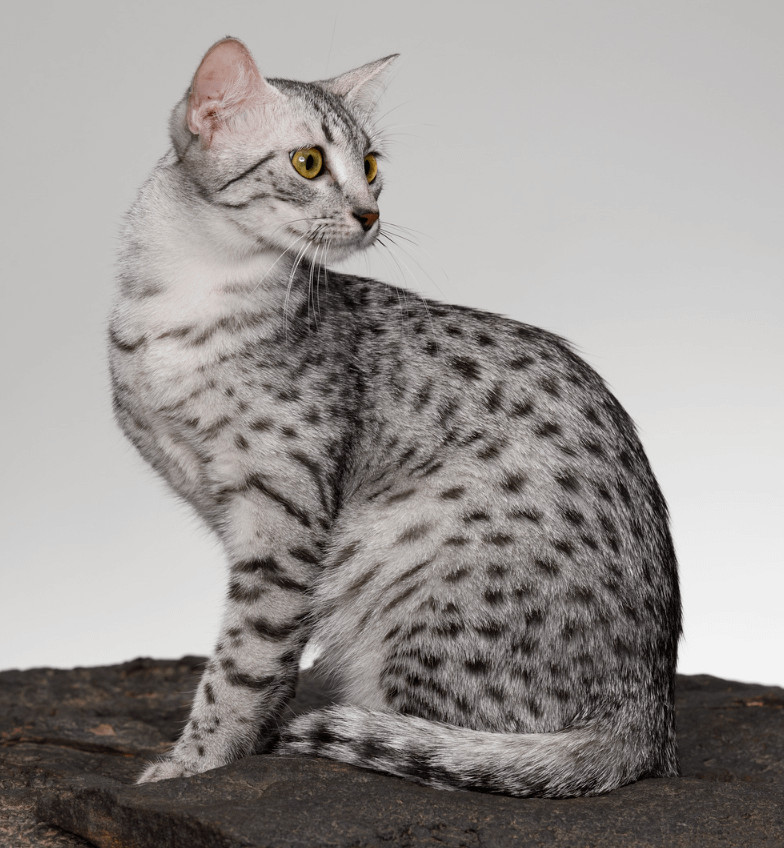 Egyptian Mau exotic house cat breed
Egyptian Mau exotic house cat breed
The Egyptian Mau holds a special place among exotic house cats, being the only naturally spotted domestic cat breed. Their history is deeply intertwined with ancient Egypt, where their ancestors were revered and depicted in artwork. “Mau” itself is the Egyptian word for cat, highlighting their ancient origins.
Egyptian Maus are elegant and athletic, capable of reaching speeds up to 30 mph, making them incredibly agile. Their spotted coats often resemble snow leopards, with striking silver, bronze, or smoke color variations. They are medium-sized cats, known for their devoted and playful personalities. Egyptian Maus are intelligent and enjoy interactive play, forming strong bonds with their families. Their rich history and natural beauty make them truly unique exotic house cats.
Highlander
 Highlander exotic house cat breed
Highlander exotic house cat breed
The Highlander cat offers a double dose of exotic appeal. Their spotted or marbled coats evoke the leopard, while their distinctive curled ears and bobbed tail hint at a lynx or bobcat ancestry. This breed is a man-made creation, originating from crosses between the experimental Desert Lynx breed and the Jungle Curl, aiming to combine unique physical traits into one captivating cat.
Highlanders are playful and energetic, weighing up to 20 pounds. They are known for their outgoing and friendly personalities, adapting well to family life and enjoying interaction. Their unique combination of wild looks and affectionate nature makes them fascinating exotic house cats for those seeking something truly different.
Savannah
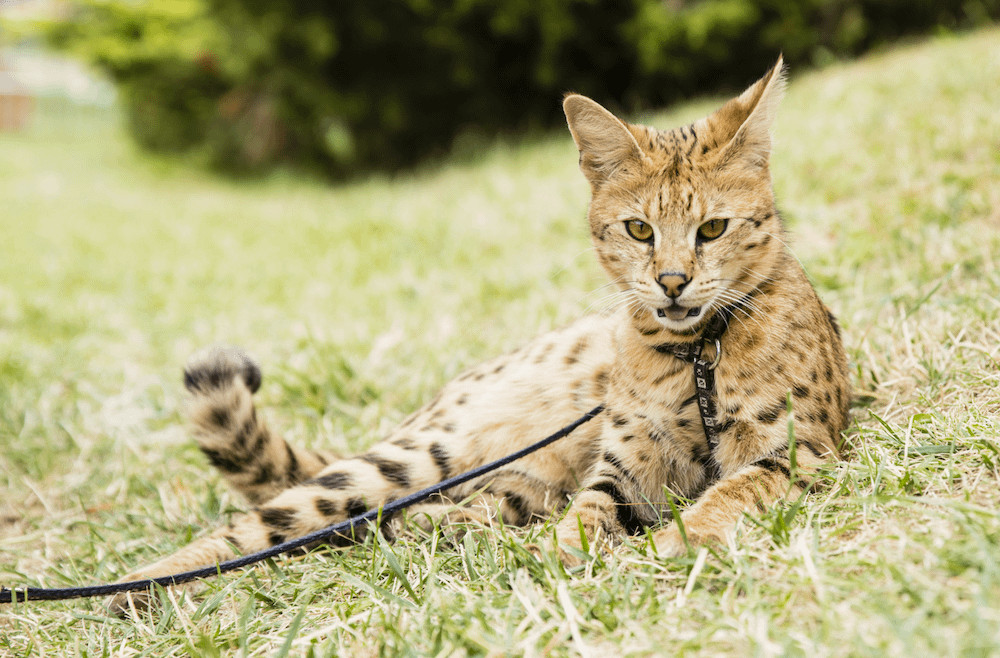 Savannah exotic house cat breed
Savannah exotic house cat breed
The Savannah cat is perhaps the epitome of an exotic house cat, being one of the closest domestic breeds to a wild feline. They are a hybrid breed, resulting from crosses between domestic Siamese cats and African Servals, small wildcats known for their striking appearance and athleticism. Savannahs are tall, slender, and strikingly spotted, truly resembling miniature servals.
Savannahs are highly active, adventurous, and intelligent, often described as dog-like in their loyalty and trainability. They can grow quite large, sometimes reaching 25 pounds or more. Their strong hunting instincts mean they may not be suitable for households with small pets like birds or rodents. Due to their wild ancestry, Savannah ownership is often regulated, requiring specific generations removed from the serval parent to be legal pets in many areas. Despite these considerations, their stunning appearance and engaging personalities make them highly sought-after exotic house cats for experienced owners.
Serengeti
 Serengeti exotic house cat breed
Serengeti exotic house cat breed
The Serengeti cat is named after the Serengeti plains of Tanzania and intentionally bred to resemble the African Serval, even though they have no serval blood in their lineage. This breed was developed by crossing Bengals and Oriental Shorthairs, focusing on achieving a similar spotted coat pattern and elegant, long-legged physique to the serval.
Serengeti cats are medium-sized, reaching up to 15 pounds, and known for their striking spotted coats and large, alert ears. They are energetic and playful, capable of impressive leaps and bounds. Serengetis can be initially shy but quickly become affectionate and devoted companions. Their wild appearance combined with a domestic temperament makes them appealing exotic house cats for those who admire the serval’s look but desire a fully domestic pet.
Bombay
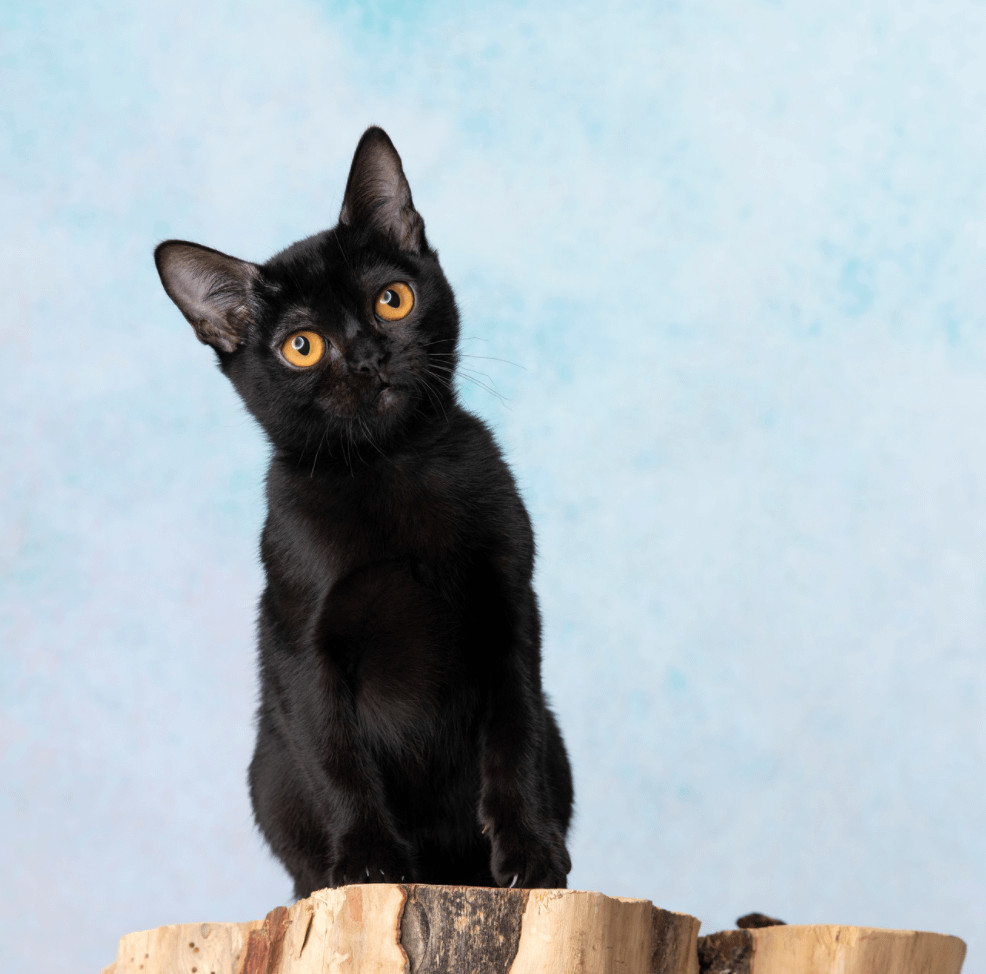 Bombay exotic house cat breed
Bombay exotic house cat breed
The Bombay cat is often referred to as a “parlor panther” due to its sleek, jet-black coat and captivating copper eyes. This breed was intentionally developed to resemble a miniature black leopard, paying homage to the black leopards of India, particularly Bombay (now Mumbai). Bombay cats are a cross between Burmese and American Shorthairs, resulting in their distinctive appearance and affectionate personality.
Bombay cats are medium-sized, reaching up to 15 pounds, and known for their playful and sociable nature. They are highly people-oriented and enjoy being involved in family activities, often greeting visitors at the door. Bombays are intelligent and can be trained to do tricks. Their striking black coat and affectionate personality make them unique and elegant exotic house cats, perfect for those seeking a touch of panther-like mystique in a domestic companion.
Cats That Look Like Lions
Abyssinian
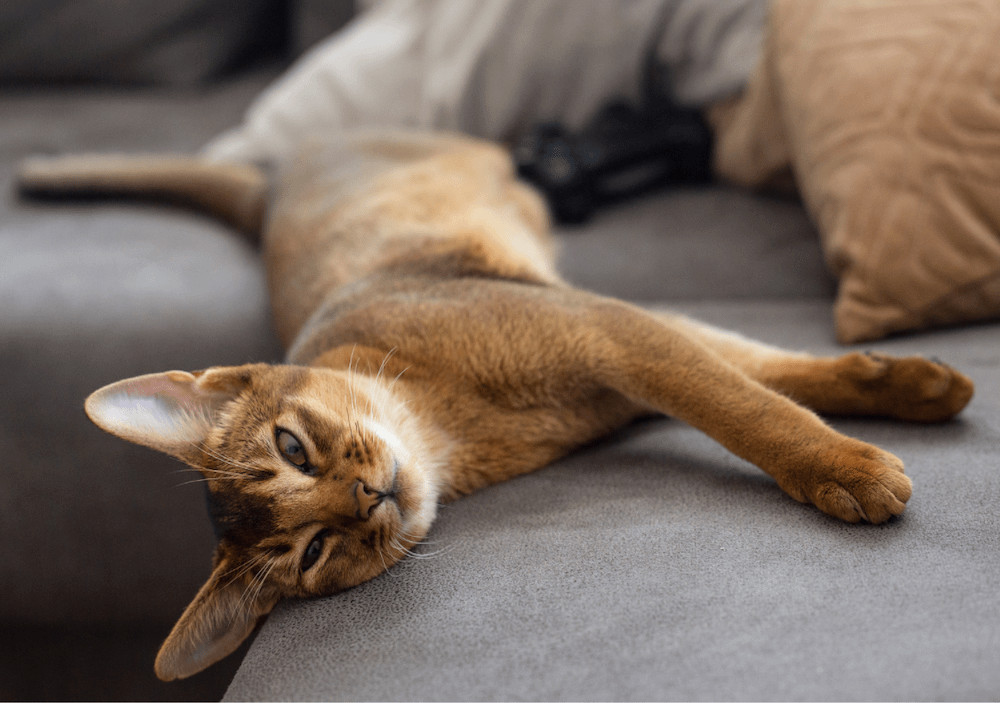 Abyssinian exotic house cat breed
Abyssinian exotic house cat breed
The Abyssinian cat is considered one of the oldest domestic cat breeds, with possible origins tracing back to ancient Egypt and Abyssinia (now Ethiopia). Their ticked tabby coat pattern, where individual hairs are banded with different colors, gives them a wild, lion-like or mountain lion-like appearance, despite their relatively small size.
Abyssinians are slender and graceful cats, typically weighing between 7 and 10 pounds. They are known for their intelligence, curiosity, and energetic personalities. While affectionate, Abyssinians are not typically lap cats, preferring to explore and play. They thrive on interaction and mental stimulation, enjoying puzzle toys and climbing opportunities. Their regal bearing and ticked coat make them resemble miniature mountain lions, qualifying them as subtly exotic house cats.
Chausie
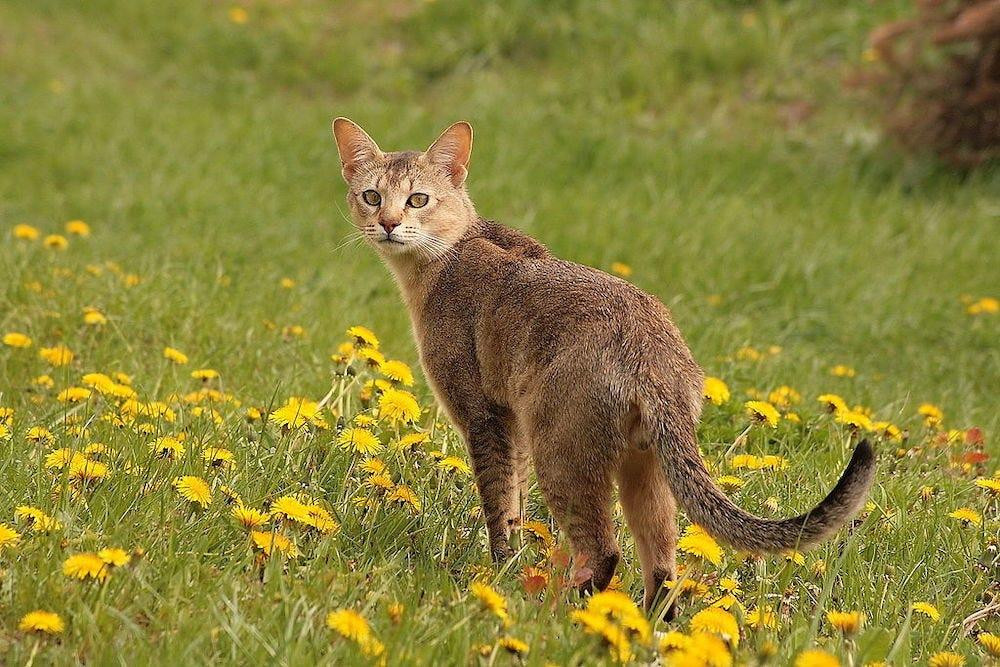 Chausie exotic house cat breed
Chausie exotic house cat breed
The Chausie stands out among exotic house cats with its direct lineage to the Jungle Cat (Felis chaus), a wildcat breed. Chausies are a hybrid breed, developed to resemble their wild ancestors in appearance while possessing a domestic temperament. Their larger size, athletic build, and often tawny or brown ticked coats contribute to their lion-like resemblance. The name “Chausie” itself is derived from “Felis chaus.”
Chausies are large for domestic cats, sometimes reaching up to 25 pounds. They are known for their intelligence, activity, and outgoing personalities. Chausies are often described as dog-like in their trainability and enjoyment of activities like leash walking and fetching. Their wild ancestry and impressive size contribute to their lion-like appearance, making them a truly exotic house cat breed for those seeking a cat with a touch of the wild.
Cats That Look Like Bobcats
American Bobtail
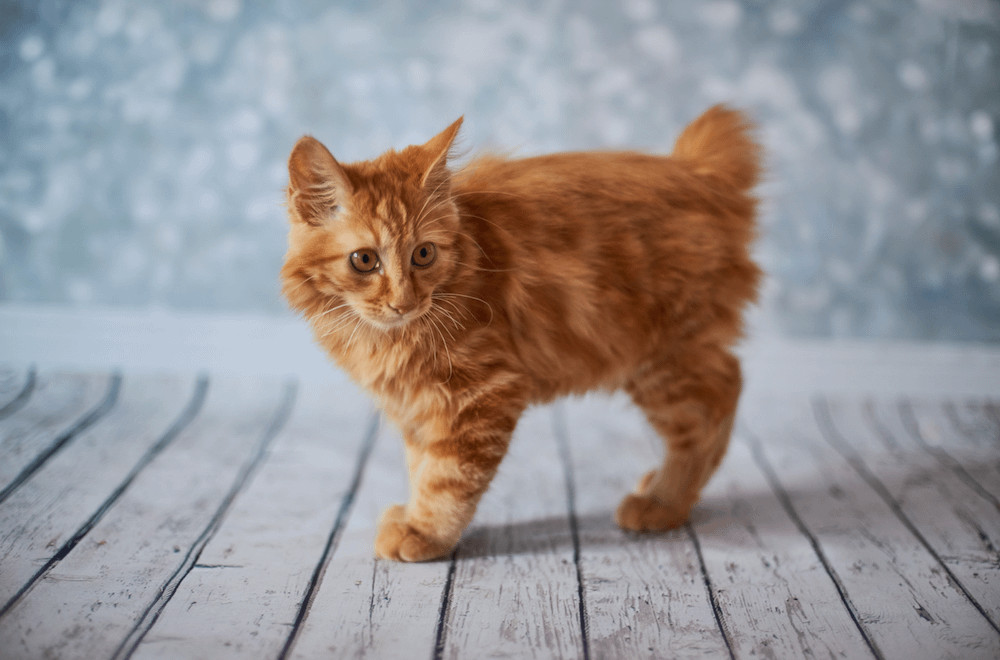 American Bobtail exotic house cat breed
American Bobtail exotic house cat breed
The American Bobtail cat is characterized by its naturally occurring short tail, which gives it a distinctive bobcat-like appearance. This bobtail trait arose spontaneously in domestic cats and was then selectively bred to create the breed we know today. Despite their wild look, American Bobtails are fully domestic and known for their gentle and affectionate personalities.
American Bobtails are medium to large-sized cats, reaching up to 16 pounds, and are slow to mature, taking up to three years to reach full size. They are adaptable and enjoy interacting with their families, often described as playful and even dog-like in their ability to learn tricks and play fetch. Their bobbed tail and often tabby or lynx-point coats contribute to their bobcat resemblance, making them charming and unique exotic house cats.
Kurilian Bobtail
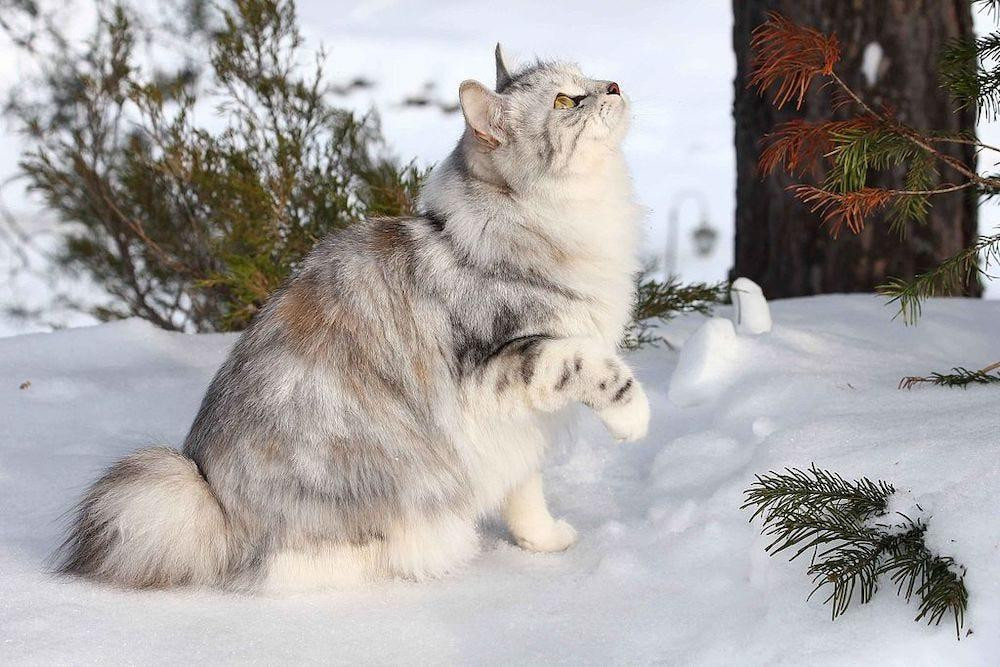 Kurilian Bobtail exotic house cat breed
Kurilian Bobtail exotic house cat breed
The Kurilian Bobtail is another bobtailed breed, originating from the Kuril Islands and Sakhalin Island of Russia. Their short, often pom-pom-like tail and sturdy build give them a lynx-like or bobcat-like appearance. Kurilian Bobtails are a natural breed, meaning their bobtail trait developed naturally in their native environment.
Kurilian Bobtails are medium-sized and known for their playful and gentle personalities. They are often fond of water and are skilled hunters. Despite their somewhat wild appearance, they are affectionate and sociable cats, enjoying human companionship. Their distinctive bobtail and hardy nature make them appealing and relatively rare exotic house cats.
Manx
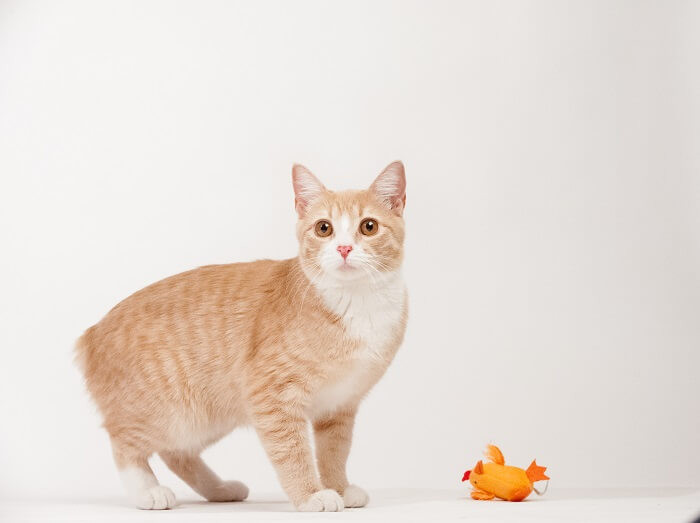 Manx exotic house cat breed
Manx exotic house cat breed
The Manx cat is famous for its taillessness, a genetic mutation that originated on the Isle of Man. While some Manx cats have short tails, the most distinctive variety is completely rumpy, lacking any tail at all. This taillessness, combined with their sturdy build and rounded appearance, can evoke a bobcat-like image.
Manx cats are medium-sized and known for their intelligent and playful personalities. They were originally working cats, valued for their hunting skills. While affectionate and people-oriented, it’s crucial to be aware that the tailless mutation in Manx cats can be associated with health issues, particularly spinal problems. Adopting from reputable rescues is especially important for this breed. Despite potential health concerns, their unique taillessness makes them stand out as unusual and exotic house cats.
Pixie-bob
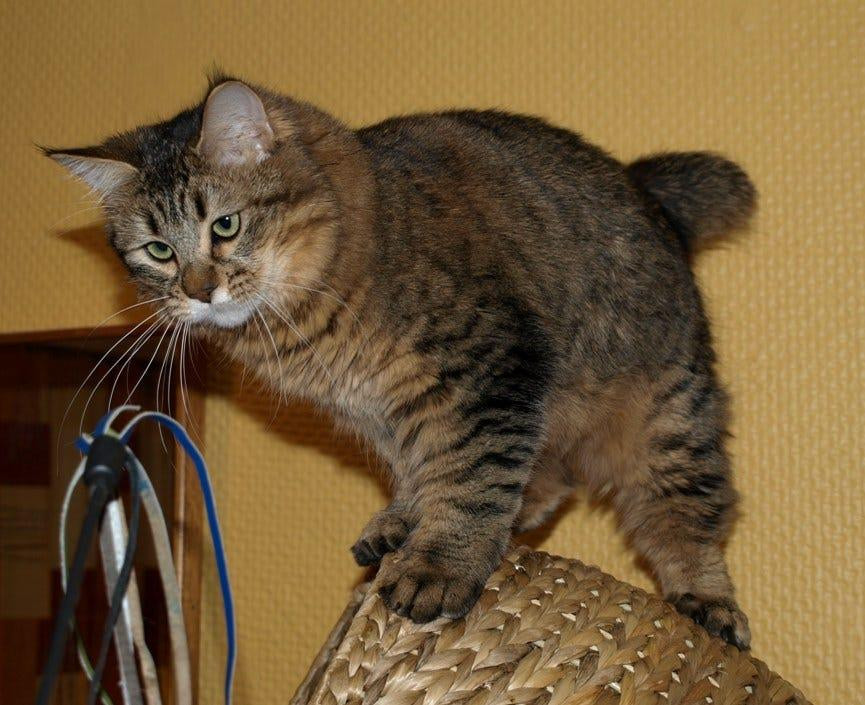 Pixiebob exotic house cat breed
Pixiebob exotic house cat breed
The Pixie-bob is specifically bred to resemble the wild Coastal Red Bobcat found in the Pacific Northwest. They are a domestic breed with a naturally occurring bobtail and often possess polydactyly (extra toes), further enhancing their unique appearance. Despite legends of wild bobcat ancestry, Pixie-bobs are purely domestic cats selectively bred for their bobcat-like traits.
Pixie-bobs are medium to large-sized and known for their gentle, playful, and dog-like personalities. They are often very attached to their families and can be trained to walk on a leash and play fetch. Their bobbed tail, often lynx-like coat patterns, and sometimes polydactyl paws contribute to their strong resemblance to bobcats, making them highly sought-after exotic house cats for those wanting a truly wild look in a domestic companion.
Have these exotic house cats sparked your interest in the feline world? Remember to explore your local animal shelters, rescues, and breed-specific organizations to find the perfect cat for your home.
If you’re considering welcoming one of these stunning breeds into your family, be sure to check out our guide on adopting a cat to ensure you are fully prepared for cat ownership!
Photo credits:
- Toyger: © Heikki Siltala / Wikimedia Commons / CC-BY-SA-3.0
- Cheetoh: © Chris Rue / Wikimedia Commons / CC-BY-SA-4.0
- Highlander: © DigitalDirt / Wikimedia Commons / CC-BY-SA-4.0
- Chausie: © Wilczakrew / Wikimedia Commons / CC-BY-SA-3.0
- Kurilian Bobtail: © TRUE KURILIANS / Wikimedia Commons / CC-BY-SA-4.0
- Pixie-bob: © Donna Cox / Wikimedia Commons / CC-BY-3.0
[
